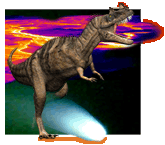Biostratigraphy, mineralogy and geochemistry of the Trabakua Pass and Ermua sections in Spain : Paleocene-Eocene transitions
Isotopie, geochemical and bulk mineralogical analyses in the Trabakua and Ermua sections. Basque Basin, reveal major changes across the Paleocene- Eocene transition. Expanded sedimentary records exhibit a gradual decrease of 1.0 %o in 5 "C values in the lower part of Zone P5 followed by a more rapid 3 %o negative excursion. The 3 %si S l3C excursion is associated with an abrupt decrease in carbonate sedimentation, increased detrital flux and decreased grain size which suggest changes in marine/atmospheric currents and/or size and structure of the ocean carbon reservoir. The clays recognized at Trabakua record a deep burial diagenesis as indicated by two generations of chlorite. the presence of mixed-layers chlorite-smectite and illite-smectite. the absence of smectite and the near absence of kaolinite. The very low 5 "O values (<-3.5%o) throughout the Trabakua and Ermua sections reflect diagenetic al¬ teration rather than paleotemperatures. Because of deep burial diagenesis and very poorly preserved microfossils. the Trabakua Pass and Ermua sections are not optimal potential stratotypes for the Paleocene-Eocene boundary. PDF

